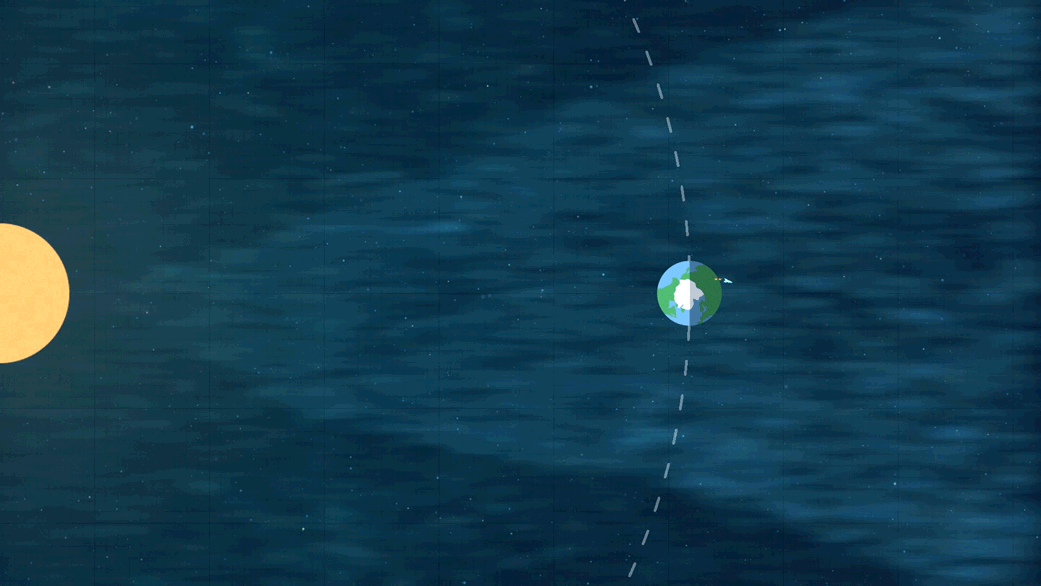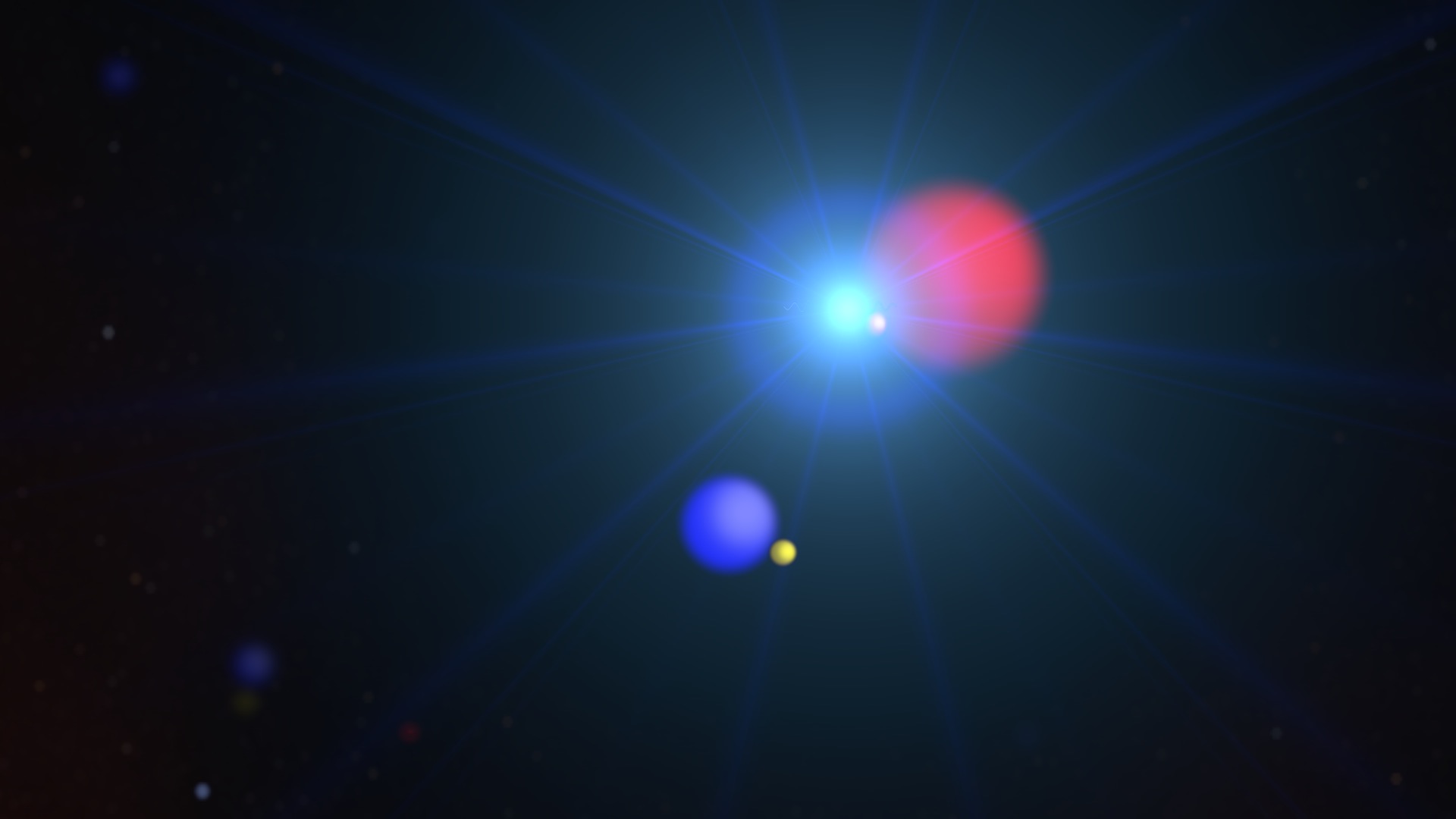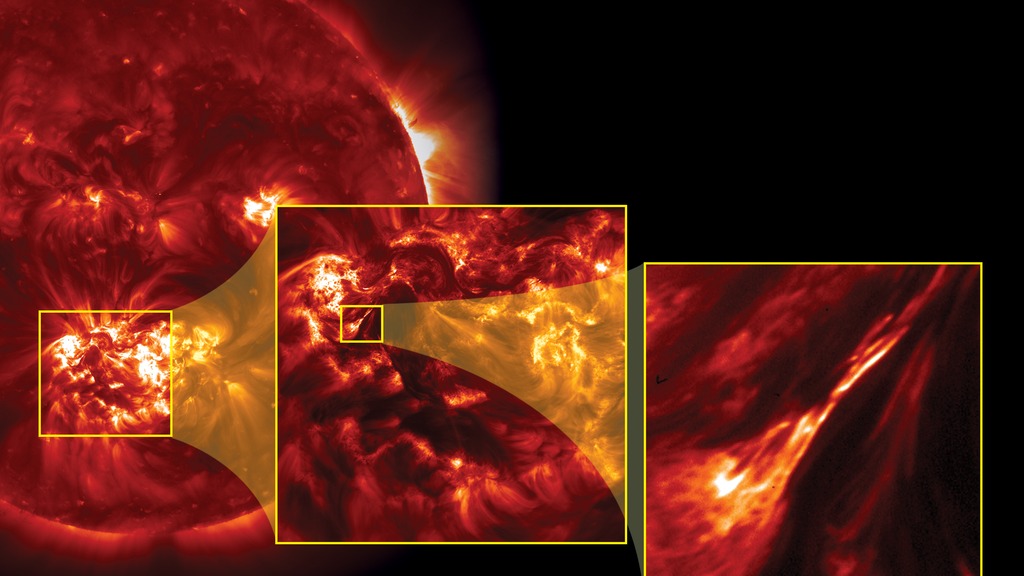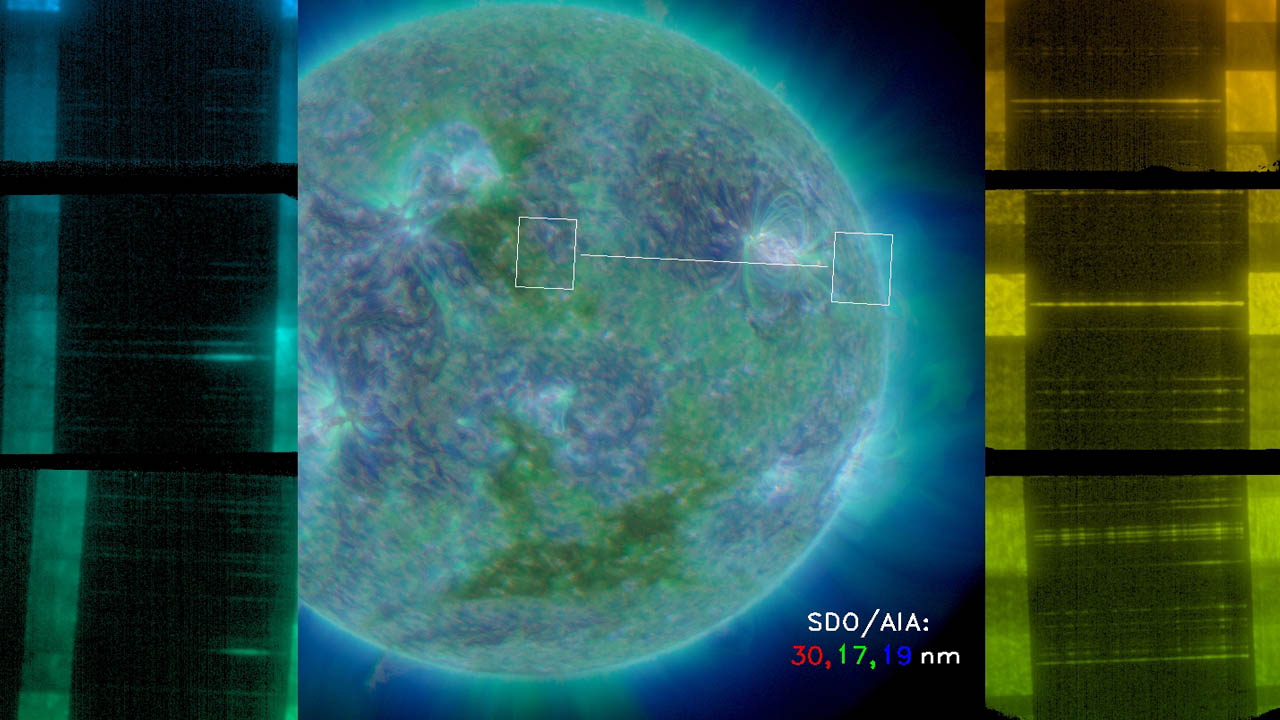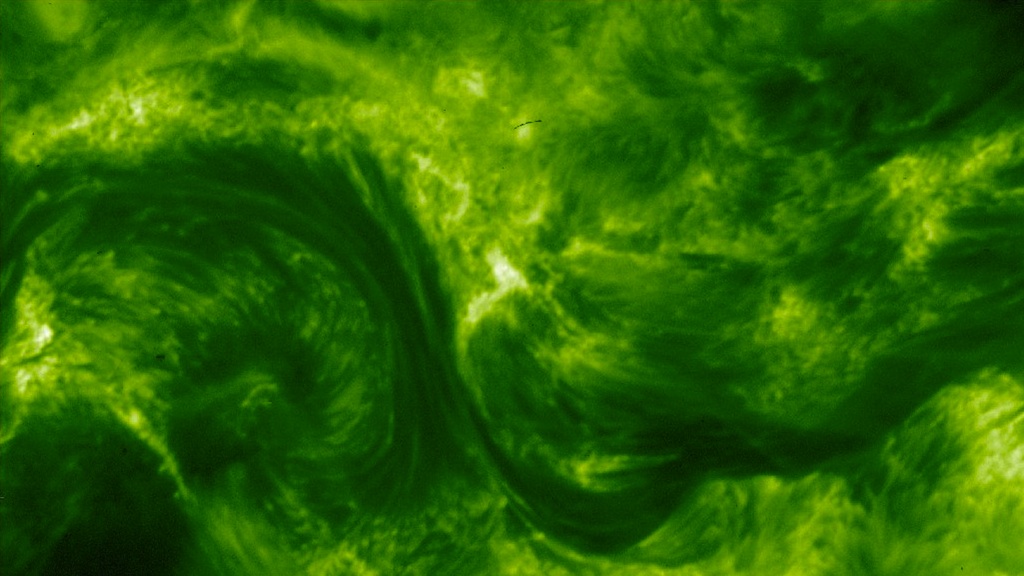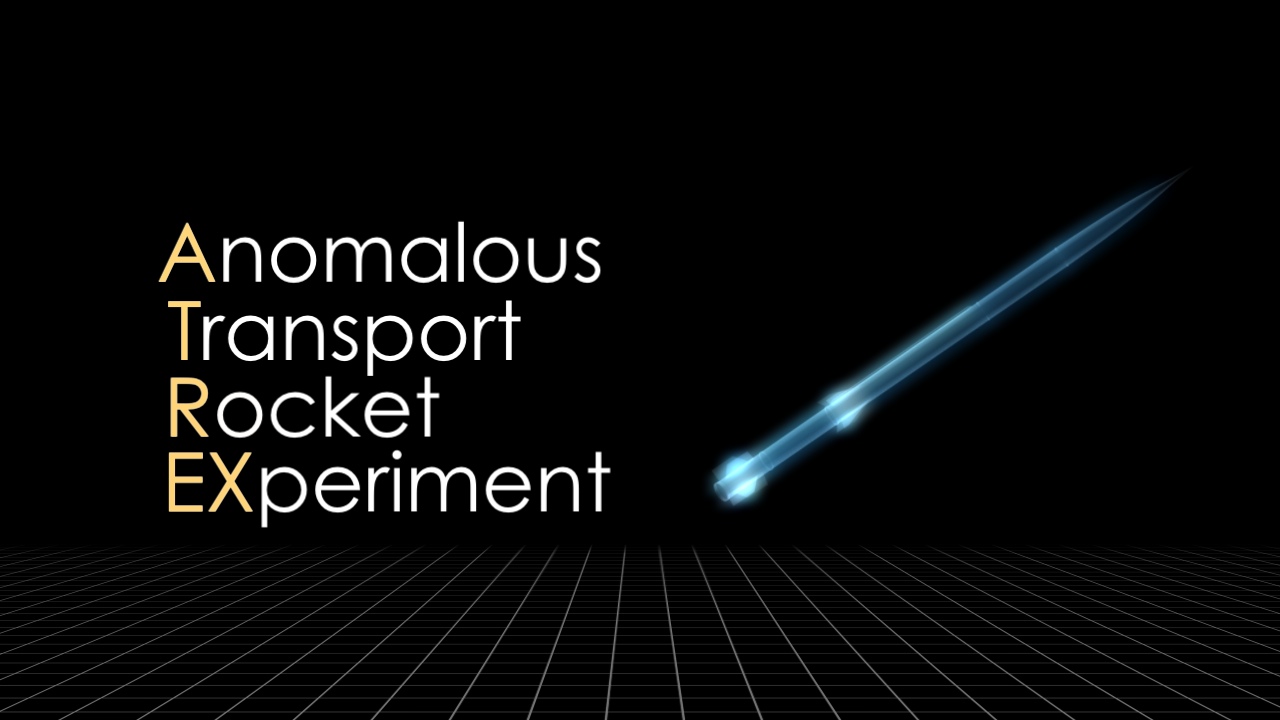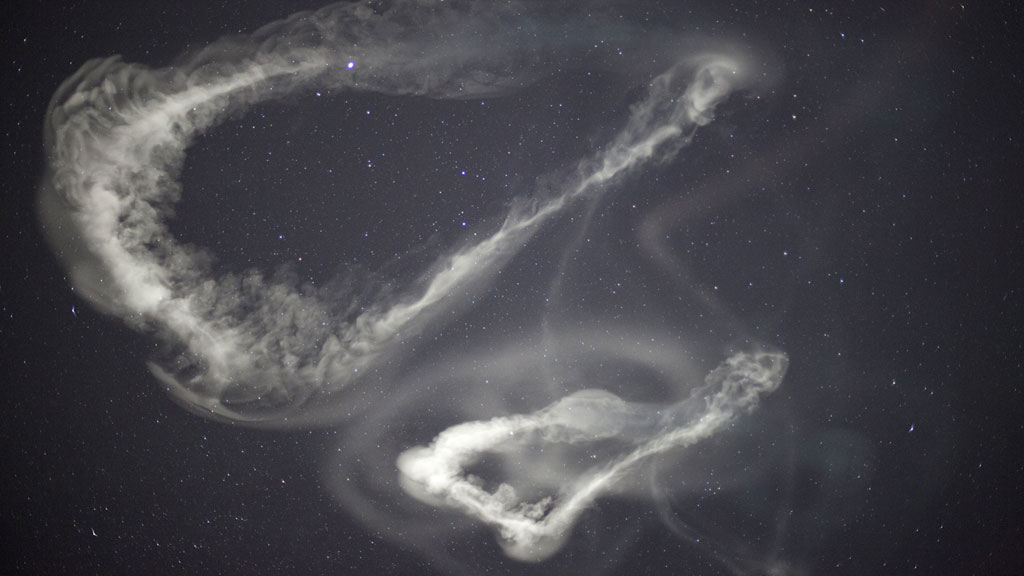Sounding Rockets
Overview
For over 40 years, NASA's Sounding Rocket Program has provided critical scientific, technical, and educational contributions to the nation's space program and is one of the most robust, versatile, and cost-effective flight programs at NASA.
Sounding rockets carry scientific instruments into space along a parabolic trajectory. Their overall time in space is brief, typically 5-20 minutes, and at lower vehicle speeds for a well-placed scientific experiment. The short time and low vehicle speeds are more than adequate (in some cases they are ideal) to carry out a successful scientific experiments. Furthermore, there are some important regions of space that are too low for satellites and thus sounding rockets provide the only platforms that can carry out measurements in these regions.
Go to NASA.gov for the latest sounding rocket news.
General
Sounding Rocket Animations
Go to this pageA sounding rocket is able to carry science instruments between 30 - 300 miles above Earth's surface. These altitudes are typically too high for science balloons and too low for satellites to access safely making sounding rockets the only platforms that can carry out direct in situ measurements in these regions.This animation is annoted with the altitudes. || 13181_SoundingRocket_TEXT_Prores.00001_print.jpg (1024x576) [34.4 KB] || 13181_SoundingRocket_TEXT_Prores.00001_searchweb.png (320x180) [42.6 KB] || 13181_SoundingRocket_TEXT_Prores.00001_web.png (320x180) [42.6 KB] || 13181_SoundingRocket_TEXT_Prores.00001_thm.png (80x40) [3.8 KB] || 13181_SoundingRocket_TEXT_Prores.mov (3840x2160) [3.9 GB] || 13181_SoundingRocket_TEXT_Prores.webm (3840x2160) [11.0 MB] ||
Terrier-improved Malemute Animations
Go to this pageAnimations of the Terrier-improved malemute type sounding rocket. ||
NASA's Sounding Rockets Show: Cutting-edge Science, 15 Minutes at a Time
Go to this pageSome of the smallest and lightest rockets in NASA’s lineup have made some of the biggest impacts on science. With a flight time of just about 15 minutes before falling back to Earth, sounding rockets collect unique observations on everything from our planet’s atmosphere to the Sun and even distant galaxies.Join us live to hear from scientists who have traveled to the ends of the Earth to launch sounding rockets, flown cutting-edge instruments on these suborbital flights, and used sounding rockets to make brand-new scientific discoveries.Watch on Facebook or YouTube. ||
High Above Down Under
High Above Down Under Series
Go to this sectionAround a different star, Earth may never have developed life at all. So what makes a star friendly to life? We joined two rocket teams as they traveled to the remote Northern Territory of Australia to capture light from our closest stellar neighbors to help reveal the answer. Follow their journey in the 6-part video series High Above Down Under. Episodes released weekly starting June 27, 2023.
High Above Down Under Series
Go to this sectionAround a different star, Earth may never have developed life at all. So what makes a star friendly to life? We joined two rocket teams as they traveled to the remote Northern Territory of Australia to capture light from our closest stellar neighbors to help reveal the answer. Follow their journey in the 6-part video series High Above Down Under. Episodes released weekly starting June 27, 2023.
High Above Down Under Series
Go to this sectionAround a different star, Earth may never have developed life at all. So what makes a star friendly to life? We joined two rocket teams as they traveled to the remote Northern Territory of Australia to capture light from our closest stellar neighbors to help reveal the answer. Follow their journey in the 6-part video series High Above Down Under. Episodes released weekly starting June 27, 2023.
High Above Down Under Series
Go to this sectionAround a different star, Earth may never have developed life at all. So what makes a star friendly to life? We joined two rocket teams as they traveled to the remote Northern Territory of Australia to capture light from our closest stellar neighbors to help reveal the answer. Follow their journey in the 6-part video series High Above Down Under. Episodes released weekly starting June 27, 2023.
High Above Down Under Series
Go to this sectionAround a different star, Earth may never have developed life at all. So what makes a star friendly to life? We joined two rocket teams as they traveled to the remote Northern Territory of Australia to capture light from our closest stellar neighbors to help reveal the answer. Follow their journey in the 6-part video series High Above Down Under. Episodes released weekly starting June 27, 2023.
High Above Down Under Series
Go to this sectionAround a different star, Earth may never have developed life at all. So what makes a star friendly to life? We joined two rocket teams as they traveled to the remote Northern Territory of Australia to capture light from our closest stellar neighbors to help reveal the answer. Follow their journey in the 6-part video series High Above Down Under. Episodes released weekly starting June 27, 2023.
Australia Sounding Rocket Campaign Press Kit
Go to this pageNASA will launch three suborbital sounding rockets in June and July 2022 from the Arnhem Space Center in Australia’s Northern Territory to conduct astrophysics studies that can only be done from the Southern Hemisphere. The three missions will focus on α Centauri A and B, two of the three-star α Centauri system that are the closest stars to our Sun, and X-rays emanating from the interstellar medium, clouds of gases and particles between stars.The three sounding rocket night-time missions will be launched between June 26 and July 12 on two-stage Black Brant IX sounding rockets, from the Arnhem Space Center, which is owned and operated by Equatorial Launch Australia or ELA. The Arnhem Space Center is a commercial space launch facility, located on the Dhupuma Plateau near Nhulunbuy. The NASA missions will be the first launches from Arnhem.Learn more: Australia Sounding Rocket Fact SheetWatch more: Sounding Rockets: Cutting Edge Science, 15 Minutes at a TimeWhat Is a Sounding Rocket?Riding Along with a NASA Sounding Rocket ||
EVE
Riding Along With a NASA Sounding Rocket (2021)
Go to this pageOn Sept. 9, 2021, a sounding rocket launched from the White Sands Missile Range in New Mexico, carrying a copy of the Extreme Ultraviolet Variability Experiment, or EVE. This flight was used to calibrate the identical version of EVE that has flown in space since 2010 aboard NASA’s Solar Dynamics Observatory (SDO). Over the years, the space-based EVE has become degraded by intense sunlight, so scientists fly periodic calibration missions to keep EVE’s measurements sharp. ||
Riding on a Sounding Rocket
Go to this pageOn March 23, 2011, two on-board cameras followed a sounding rocket on its journey from Earth to space and back again. The rocket was launched to measure solar energy output and calibrate the EVE instrument on the Solar Dynamics Observatory. ||
RockOn!
RockOn! 2019
Go to this pageStudents from across the United States witnessed the launching of their experiments aboard a NASA suborbital sounding rocket Thursday, June 20, 2019, from the Wallops Flight Facility in Virginia. The rocket carried 28 experiments (measuring acceleration, humidity, pressure, temperature and radiation counts) from the RockOn! Program.Participants in RockOn! receive instruction on the basics required to develop a scientific payload for flight on a suborbital rocket. After learning the basics in RockOn!, students may then participate in RockSat-C, where during the school year they design and build a more complicated experiment.Conducted with the Colorado and Virginia Space Grant Consortia, RockOn! is in its twelfth year and RockSat-C its eleventh year. ||
Grand Challenge Initiative - Cusp
Why NASA is sending rockets into Earth’s leaky atmosphere
Go to this pageIn the tiny Arctic town of Ny-Ålesund, where polar bears outnumber people, winter means three months without sunlight. The unending darkness is ideal for those who seek a strange breed of northern lights, normally obscured by daylight. When these unusual auroras shine, Earth’s atmosphere leaks into space.NASA scientists traveled to Ny-Ålesund to launch rockets through these auroras and witness oxygen particles right in the middle of their escape. Piercing these fleeting auroras, some 300 miles high, would require strategy, patience — and a fair bit of luck. This was NASA’s VISIONS-2 mission, and this is their story.VISIONS-2 was just the first of many. Over the coming months, rocket teams from all over the world will launch rockets into this region as part of the Grand Challenge Initiative—Cusp, an international collaboration to study the mysteries of the polar atmosphere. ||
Grand Challenge-Cusp Graphics (updated)
Go to this pageGraphicAn overview of the missions involved in the Grand Challenge Initiative-Cusp with the missions launched as of May 2019. A PDF version is available below.Credit: Mary P. Hrybyk-Keith || CUSP_Alone_Launched.png (1298x1003) [5.1 MB] || CUSP_Alone_Launched_print.jpg (1024x791) [325.2 KB] || CUSP_Alone_Launched_searchweb.png (320x180) [111.4 KB] || CUSP_Alone_Launched_thm.png (80x40) [6.9 KB] ||
Grand Challenge Initiative - Cusp: Launch Photos & Videos
Go to this pageAZURE MissionColorful clouds formed by the release of vapors from the two AZURE rockets allow scientist to measure auroral winds.Credit: NASA/Lee Wingfield || Azure_ampule_release_print.jpg (1024x682) [97.8 KB] || Azure_ampule_release.jpg (2400x1600) [346.6 KB] || Azure_ampule_release_searchweb.png (320x180) [54.6 KB] || Azure_ampule_release_web.png (320x213) [67.1 KB] || Azure_ampule_release_thm.png (80x40) [4.6 KB] ||
VISIONS-2 Imagery
Go to this pageA collection of photos captured during NASA's VISIONS-2 sounding rocket campaign in Ny-Ålesund, Svalbard, a remote archipelago off the northern coast of Norway. The mission successfully launched on Dec. 7, 2018. ||
VISIONS-2 Aurora Imagery
Go to this pageAurora in Ny-Ålesund, Svalbard on December 6, 2018. A GIF optimized for Twitter. || Aurora.gif (1920x1080) [13.3 MB] || Aurora in Ny-Ålesund, Svalbard on December 6, 2018.Credit: NASA/Joy Ng || Dec6_Aurora_JoyNg_print.jpg (1024x682) [455.2 KB] || Dec6_Aurora_JoyNg.jpg (4104x2736) [4.6 MB] || Dec6_Aurora_JoyNg_searchweb.png (320x180) [67.8 KB] || Dec6_Aurora_JoyNg_web.png (320x213) [82.2 KB] || Dec6_Aurora_JoyNg_thm.png (80x40) [4.6 KB] ||
Grand Challenge-Cusp Graphics
Go to this pageGraphicNorth of Norway over the Norwegian and Greenland Seas, a magnetic bubble, known as the cusp, surrounds Earth and dips inward, allowing space particles to funnel in toward the planet.Credit: Andøya Space Center/Trond Abrahamsen || asc-earth-magnetosphere-to-scale_print.jpg (1024x619) [138.1 KB] || asc-earth-magnetosphere-to-scale.jpeg (5352x3240) [13.0 MB] || asc-earth-magnetosphere-to-scale_searchweb.png (320x180) [67.0 KB] || asc-earth-magnetosphere-to-scale_web.png (320x193) [71.7 KB] || asc-earth-magnetosphere-to-scale_thm.png (80x40) [4.3 KB] ||
Poker Flats
2018 Poker Flat Sounding Rocket Infographic
Go to this pageImage of poster || 2018_Poker_Flat_Sounding_Rocket_Quick_Look_Infographic.jpg (3378x6000) [2.4 MB] || 2018_Poker_Flat_Sounding_Rocket_Quick_Look_Infographic_searchweb.png (320x180) [64.9 KB] || 2018_Poker_Flat_Sounding_Rocket_Quick_Look_Infographic_thm.png (80x40) [6.0 KB] || For More Information || See NASA.gov ||
Sounding Rockets Highlights
Go to this pageNASA Launches Sounding Rockets to Study AuroraMusic credit: Trial by Gresby Race Nash [PRS] from Killer Tracks. || LARGE_MP4-12598_SoundingRockets_MASTER_large.00745_print.jpg (1024x682) [134.2 KB] || LARGE_MP4-12598_SoundingRockets_MASTER_large.00745_searchweb.png (320x180) [74.7 KB] || LARGE_MP4-12598_SoundingRockets_MASTER_large.00745_web.png (320x213) [92.8 KB] || LARGE_MP4-12598_SoundingRockets_MASTER_large.00745_thm.png (80x40) [5.3 KB] || 12598_SoundingRockets_MASTER.mov (1152x768) [579.8 MB] || PRORES_B-ROLL-12598_SoundingRockets_MASTER_prores.mov (1280x720) [590.8 MB] || APPLE_TV-12598_SoundingRockets_MASTER_appletv.m4v (1280x720) [41.0 MB] || NASA_TV-12598_SoundingRockets_MASTER.mpeg (1280x720) [280.2 MB] || LARGE_MP4-12598_SoundingRockets_MASTER_large.mp4 (1152x768) [85.0 MB] || YOUTUBE_HQ-12598_SoundingRockets_MASTER_youtube_hq.mov (1152x768) [105.8 MB] || LARGE_MP4-12598_SoundingRockets_MASTER_large.webm (1152x768) [8.9 MB] || APPLE_TV-12598_SoundingRockets_MASTER_appletv_subtitles.m4v (1280x720) [41.1 MB] || soundingrockets-v14.en_US.srt [1.1 KB] || soundingrockets-v14.en_US.vtt [1.1 KB] || NASA_PODCAST-12598_SoundingRockets_MASTER_ipod_sm.mp4 (320x240) [14.1 MB] ||
Aurora Imagery from Poker Flats
Go to this pageThe northern lights were seen over Alaska the night of Feb. 16, 2017 at the the Poker Flat Research Range north of Fairbanks. Credit: NASA/Terry Zaperach || PFAurora2.gif (1200x800) [1.5 MB] || PFAurora2_searchweb.png (320x180) [57.6 KB] || PFAurora2_thm.png (80x40) [4.7 KB] ||
DXL
NASA-Funded Sounding Rocket Solves One Cosmic Mystery, Reveals Another
Go to this pageDXL.jpg (1280x720) [59.0 KB] || 12363_DXL_ProRes422.mov (1920x1080) [1.3 GB] || DXL_v2.mp4 (1920x1080) [50.9 MB] || 12363_DXL_ProRes422.webm (1920x1080) [5.1 MB] || DXL_v2.en_US.srt [387 bytes] || DXL_v2.en_US.vtt [400 bytes] ||
NASA X-ray Instrument Confirms the 'Local Hot Bubble'
Go to this pageNew findings from the NASA-funded Diffuse X-ray emission from the Local Galaxy (DXL) mission have resolved a decades-old puzzle about a fog of low-energy X-rays observed over the entire sky. Using refurbished detectors first flown on a NASA sounding rocket in the 1970s, astronomers have now confirmed the long-held suspicion that much of this glow stems from a region of million-degree interstellar plasma known as the local hot bubble, or LHB.In the 1990s, a six-month all-sky survey by the German X-ray observatory ROSAT provided improved maps of the soft X-ray diffuse background. But it also revealed that comets were an unexpected source of soft X-rays. As scientists began to understand this process, called solar wind charge exchange, they realized it could occur anywhere neutral atoms interacted with the solar wind, leading scientists to challenge the LHB interpretation.On Dec. 12, 2012, DXL launched from White Sands Missile Range in New Mexico atop a NASA Black Brant IX sounding rocket, reaching a peak altitude of 160 miles (258 km) and spending five minutes above Earth's atmosphere. The mission design allowed the instrument to observe a worst-case scenario involving charge exchange with interstellar gas.The solar system is currently passing through a small cloud of cold interstellar gas as it moves through the galaxy. The cloud’s neutral hydrogen and helium atoms stream through the planetary system at about 56,000 mph (90,000 km/h). While hydrogen atoms quickly ionize and respond to numerous forces, the helium atoms travel paths largely governed by the sun's gravity. This creates a "helium focusing cone" downstream from the sun that crosses Earth's orbit and is located high in the sky near midnight in early December. Better still, it forms a region with a much greater density of neutral atoms and a correspondingly enhanced charge exchange rate.The solar wind originates in the sun's corona, the hottest part of its atmosphere, so its atoms have been ionized, stripped of many of their electrons. When these particles collide with a neutral atom, one of its electrons often jumps to the solar wind ion. Once captured, the electron briefly remains in an excited state, then emits a soft X-ray and settles down at a lower energy. To establish a baseline for the soft X-ray background, the researchers used data captured by the ROSAT mission in September 1990 in a direction looking along, rather than into, the helium focusing cone. The results indicate that only about 40 percent of the soft X-ray background originates within the solar system, which means the LHB is the dominant source. ||
Solar Corona
Sharpest-Ever Images of the Sun's Corona
Go to this pageIn July 2012 NASA's High Resolution Coronal Imager, or Hi-C, telescope launched on a sounding rocket and captured the highest-resolution images ever taken of the sun's million-degree atmosphere, or corona. The square area outlined in yellow in the full disk image of the sun [left], taken by the Atmospheric Imaging Array (AIA) on NASA's Solar Dynamics Observatory (SDO), represents the Hi-C field-of-view. The Hi-C telescope captured five minutes of data of the solar corona at about five times finer resolution than SDO's AIA. Within the Hi-C field-of-view [center], scientists identified several examples of coronal braiding—structures that appear to be wrapped and woven together. Zoomed in [right], these braided structures appear to be several strands, or magnetic field lines, tangled together, illuminated by hot plasma. This particular braided structure released energy in a small solar flare, shortly after the Hi-C flight. For decades scientists have sought to understand why the corona is 50 to 100 times hotter than the surface of the sun. Images like these, taken by Hi-C, hint that these braided structures release magnetic energy that likely contributes to the intense heating of the solar corona.Used in 2014 Calendar. ||
EUNIS Sees Evidence for Nanoflare Heating
Go to this pageScientists have recently gathered some of the strongest evidence to date to explain what makes the sun's outer atmosphere so much hotter than its surface. The new observations show temperatures in the atmosphere so hot that only one current theory explains them: something called nanoflares – a constant peppering of impulsive bursts of heating, none of which can be individually detected — provide the mysterious extra heat. These new observations come from just six minutes worth of data from one of NASA's least expensive type of missions, a sounding rocket. The EUNIS mission, short for Extreme Ultraviolet Normal Incidence Spectrograph, launched on April 23, 2013, gathering a new snapshot of data every 1.3 seconds to track the properties of material over a wide range of temperatures in the complex solar atmosphere. The unique capabilities of EUNIS enabled researchers to obtain these results. The spectrograph was able to clearly and unambiguously distinguish the observations representing the extremely hot material – emission lines showing light with a wavelength of 592.6 angstrom, where an angstrom is the size of an atom — from a very nearby light wavelength of 592.2 angstroms. ||
Sharper Image
Go to this pageOn July 11, 2012, NASA launched a sounding rocket that carried a solar telescope on a 620-second flight to space and back. About a minute into the ride, the rocket—called Hi-C, for High-Resolution Coronal imager—reached an altitude where Earth's atmosphere no longer blocked the extreme ultraviolet light the telescope was designed to observe. From this vantage point, Hi-C snapped images that revealed the dynamic structure of the super-hot solar atmosphere in five times sharper detail than ever before. Hi-C captured details 135 miles across; the previous record-holder, NASA's Solar Dynamics Observatory (SDO), captures details about 675 miles across. Watch the video to see a side-by-side comparison of imagery from Hi-C and SDO. ||
High-Altitude Winds
NASA Jet Stream Study Lights up Night Sky
Go to this pageHigh in the sky, 60 to 65 miles above Earth's surface, winds rush through a little understood region of Earth's atmosphere at speeds of 200 to 300 miles per hour. Lower than a typical satellite's orbit, higher than where most planes fly, this upper atmosphere jet stream makes a perfect target for a particular kind of scientific experiment: the sounding rocket. Some 35 to 40 feet long, sounding rockets shoot up into the sky for short journeys of eight to ten minutes, allowing scientists to probe difficult-to-reach layers of the atmosphere.In March, NASA will launch five such rockets in approximately five minutes to study these high-altitude winds and their intimate connection to the complicated electrical current patterns that surround Earth. First noticed in the 1960s, the winds in this jet stream shouldn't be confused with the lower jet stream located around 30,000 feet, through which passenger jets fly and which is reported in weather forecasts. This rocket experiment is designed to gain a better understanding of the high-altitude winds and help scientists better model the electromagnetic regions of space that can damage man-made satellites and disrupt communications systems. The experiment will also help explain how the effects of atmospheric disturbances in one part of the globe can be transported to other parts of the globe in a mere day or two.The five sounding rockets, known as the Anomalous Transport Rocket Experiment (ATREX), will launch from NASA's Wallops Flight Facility in Virginia releasing a chemical tracer into the air. The chemical — a substance called trimethyl aluminum — forms milky, white clouds that allow those on the ground to "see" the winds in space and track them with cameras. In addition, two of the rockets will have instrumented payloads to measure pressure and temperature in the atmosphere. ||
Glowing Winds
Go to this pageAt the outer limit of Earth's atmosphere, located more than 60 miles above the surface, mysterious winds rushing at speeds up to 300 miles per hour surround the planet. Little is known about this high altitude jet stream beyond the fact that its complex motion can spread space weather disturbances around the globe, which, in turn, can cause damage to satellites and disruption to communication systems. To observe the jet stream's wind patterns, NASA launched five 35-foot long sounding rockets packed with a chemical tracer over the Atlantic Ocean on March 27, 2012. Cameras on the ground tracked the movement of the glowing, milky-white clouds that developed in the early morning sky as the tracer deployed from the rockets and interacted with the jet stream. Watch the videos below to learn more about this experiment and see the rockets blast off from NASA's Wallops Flight Facility. ||
Terrier-improved Malemute Animations
Go to this pageAnimations of the Terrier-improved malemute type sounding rocket. ||
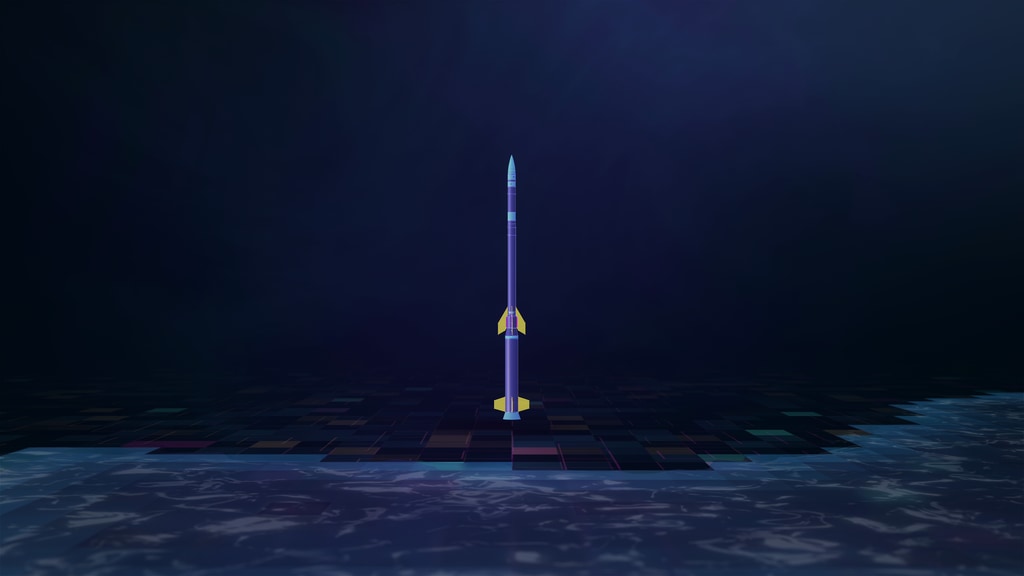
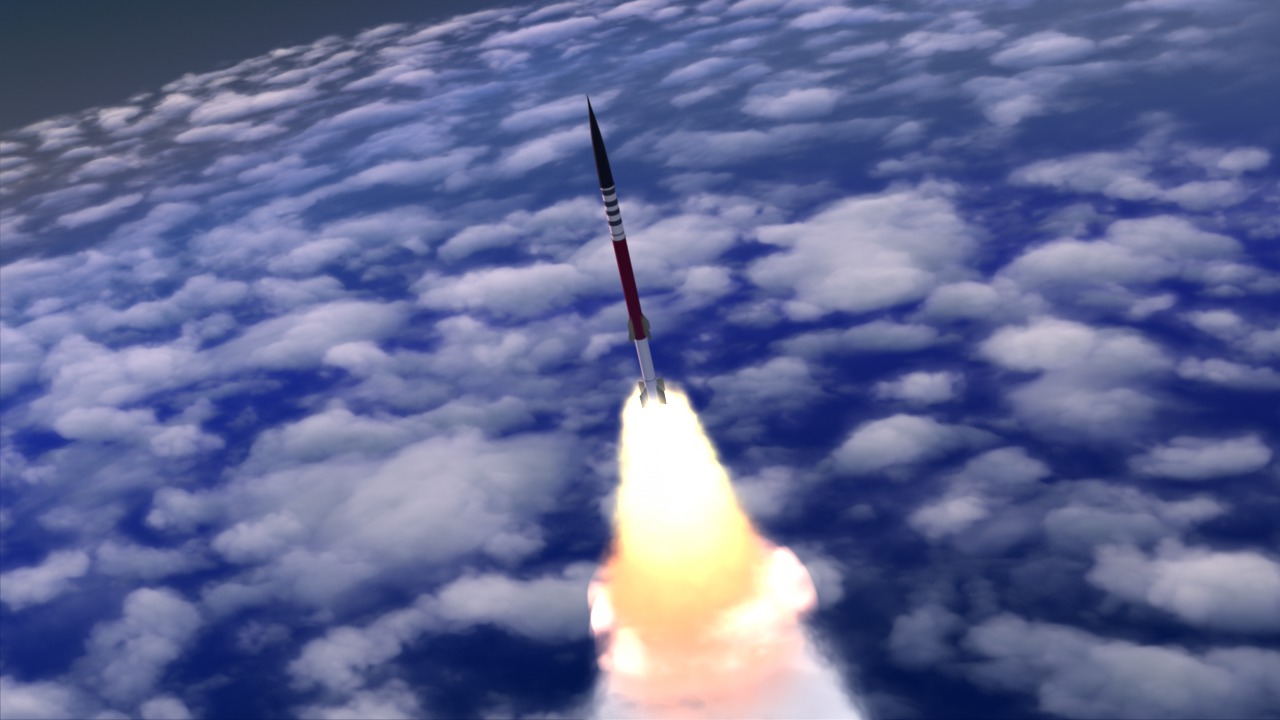
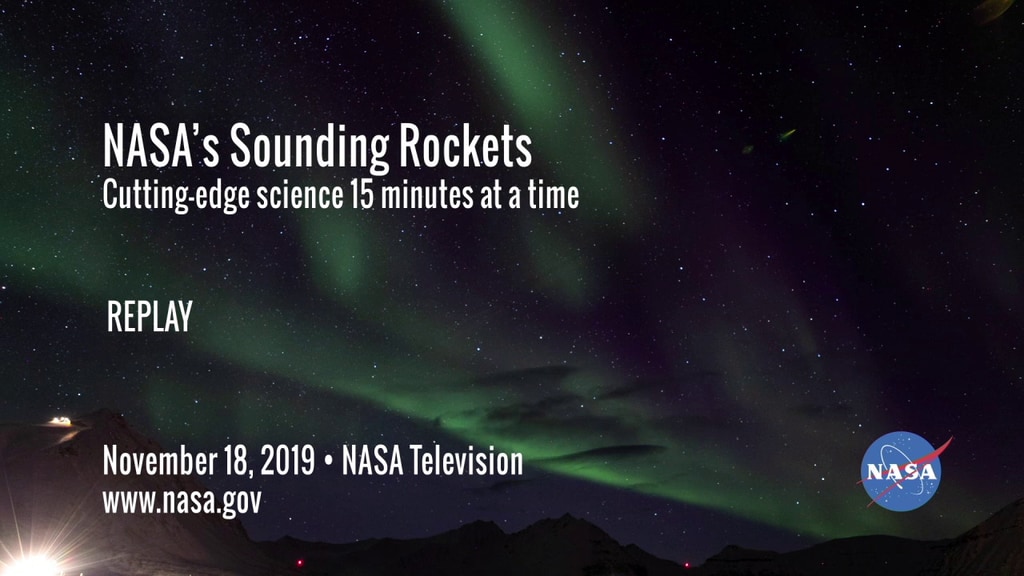

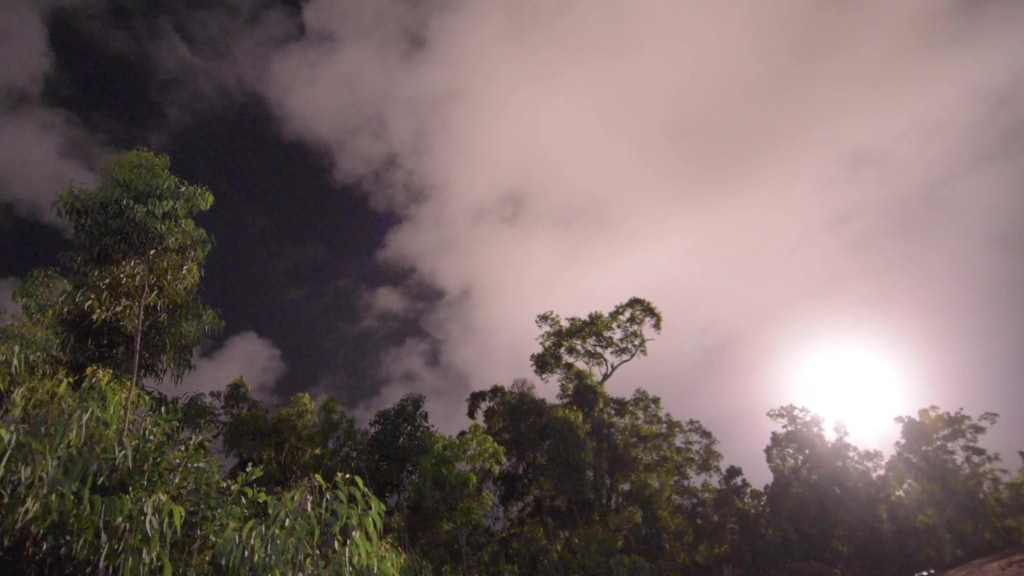
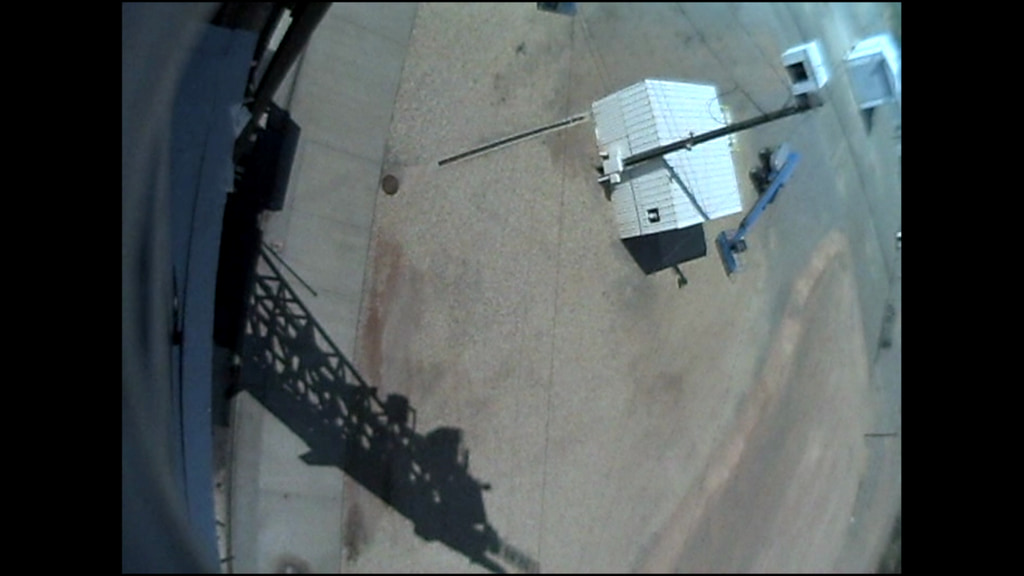
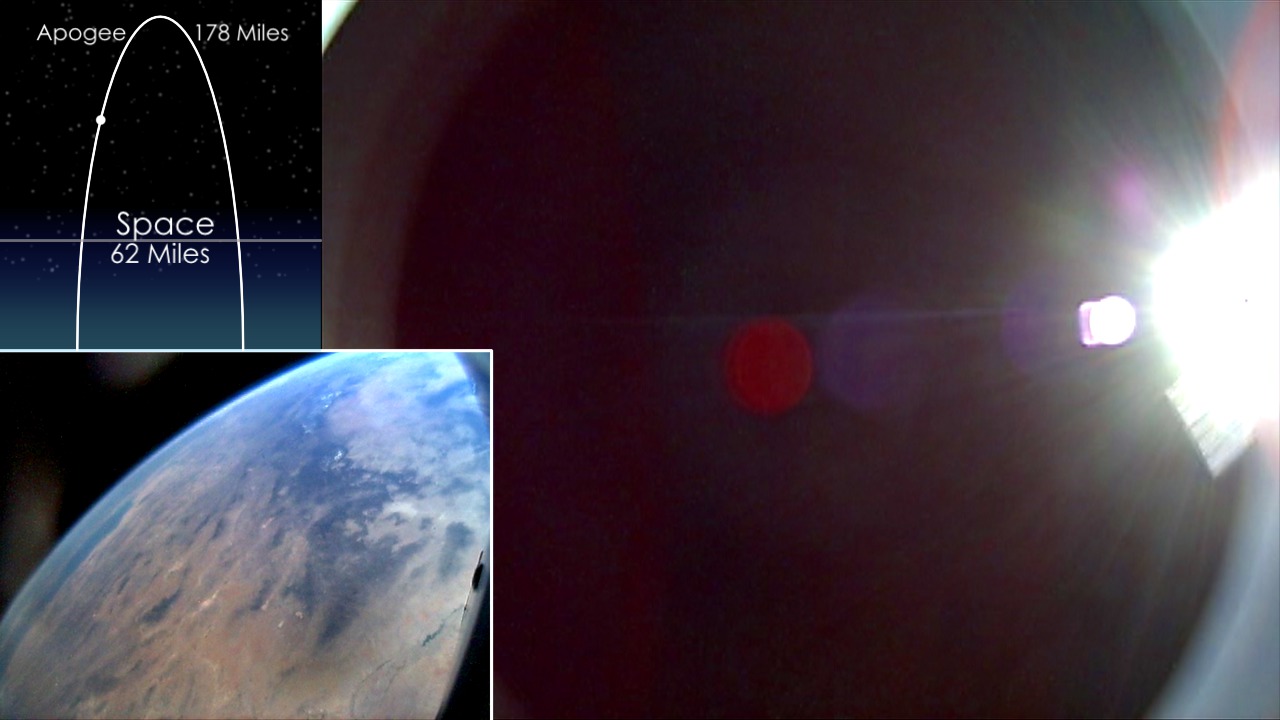
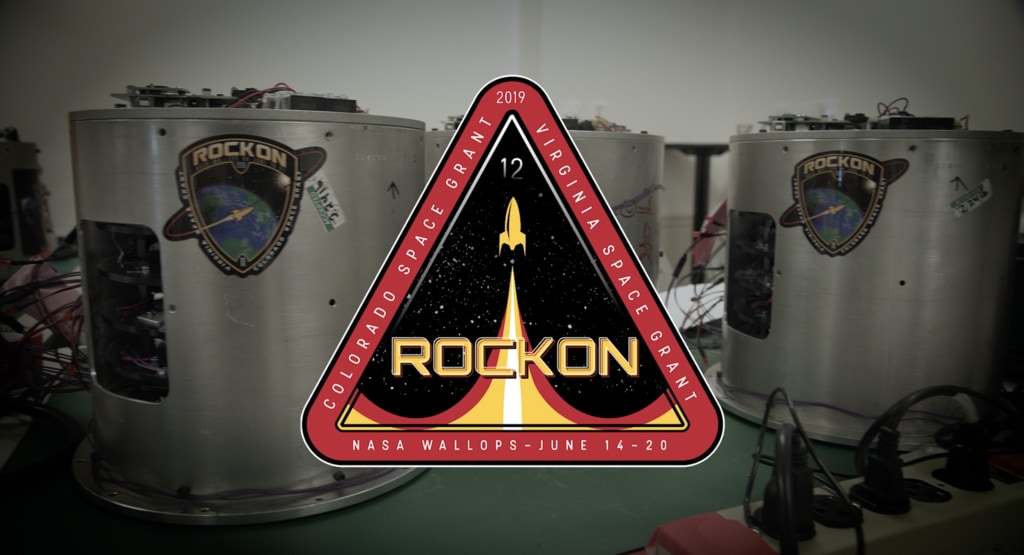
![Watch this video on the NASA Goddard YouTube channel.Complete transcript available.Music credits: “Journey to the Past”, “New Philosopher”, “Curiosity Cabinet”, “Buzzing Culture”, “Dusk Theories”, “At the Edge of the End” by Laurent Dury [SACEM]; “Strong Voices” by Tom Caffey [ASCAP]; “The Fortune Teller” by Phil Stevens [PRS]; “Shinobi’s Fight” by Benoit Malis [SACEM]; “Spring into Life” by Oliver Worth [PRS]](/vis/a010000/a013400/a013430/VISIONS2_Thumbnail.jpg)
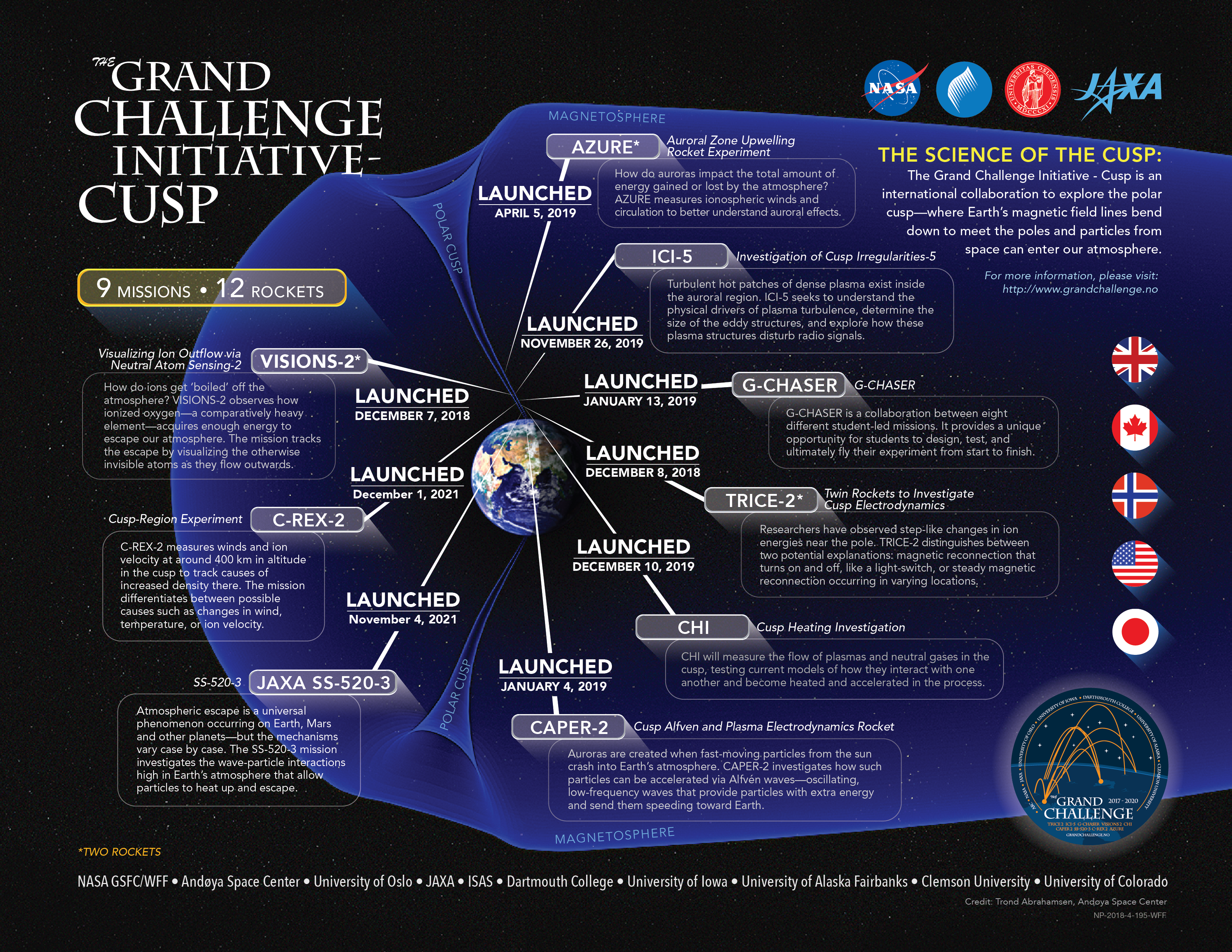

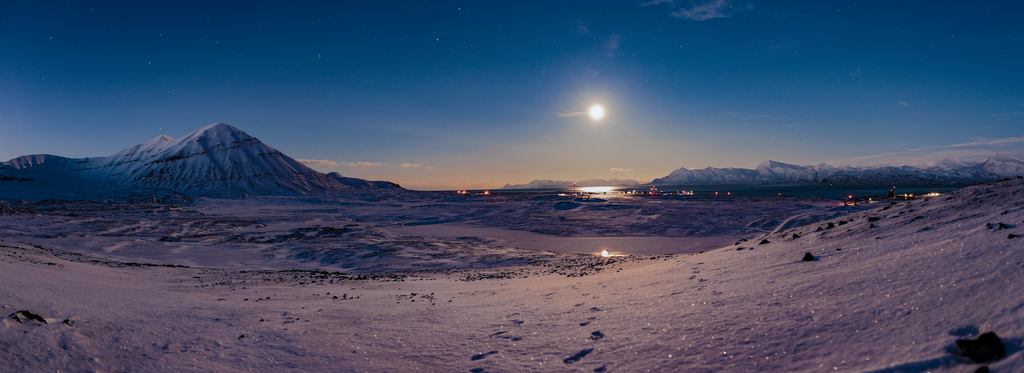

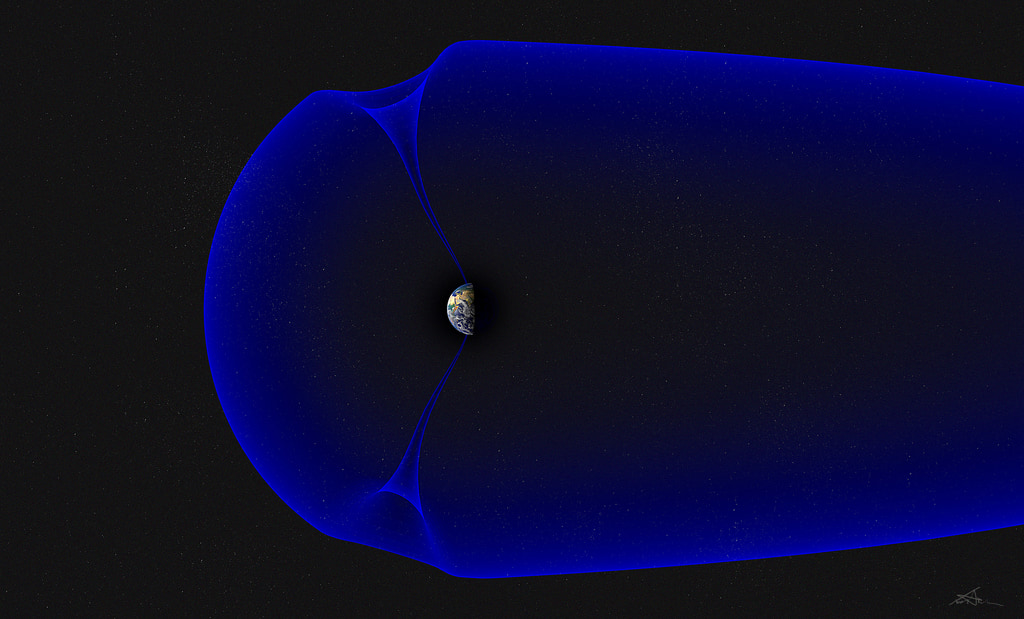
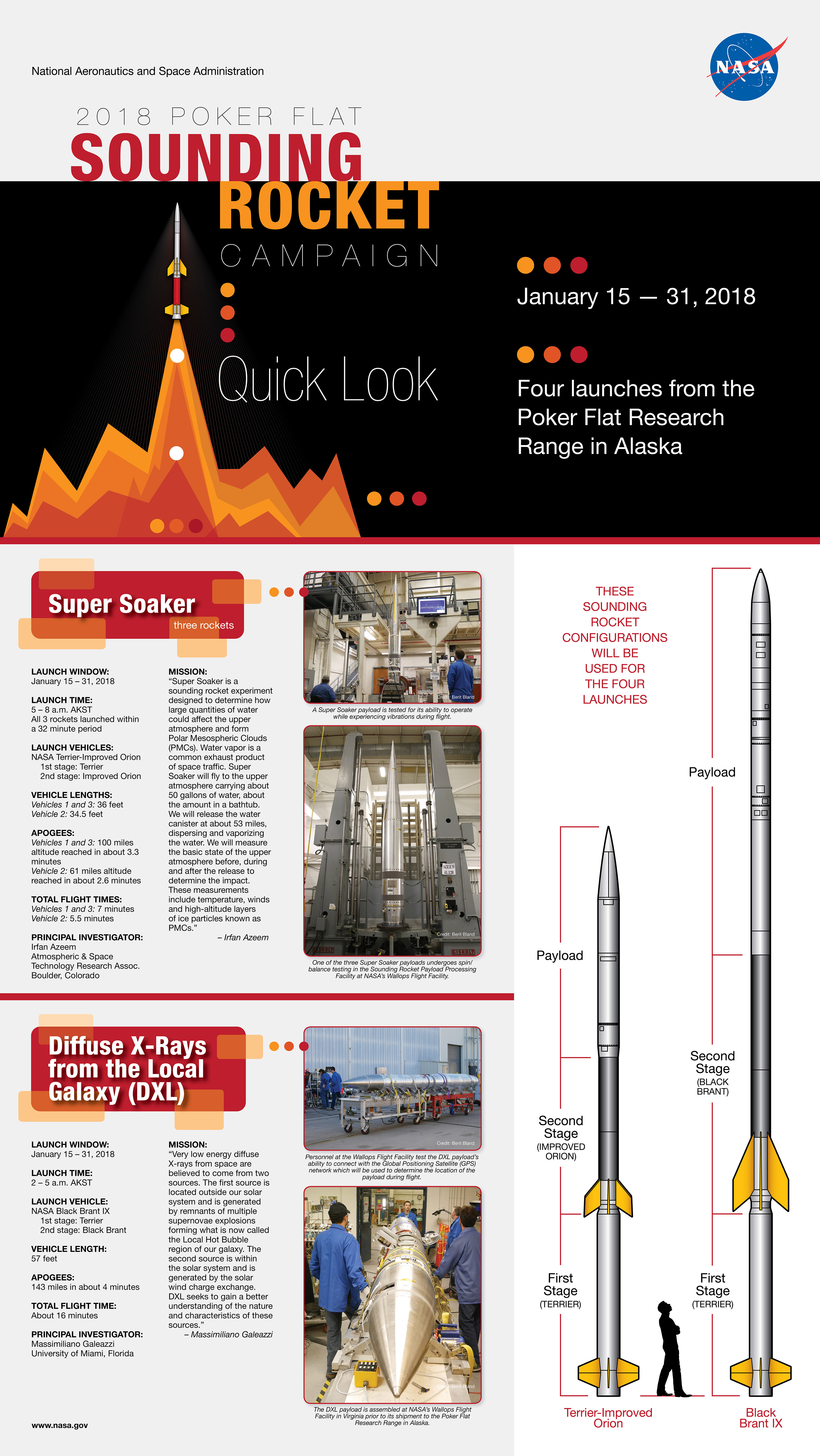
![NASA Launches Sounding Rockets to Study AuroraMusic credit: Trial by Gresby Race Nash [PRS] from Killer Tracks.](/vis/a010000/a012500/a012598/LARGE_MP4-12598_SoundingRockets_MASTER_large.00745_print.jpg)

